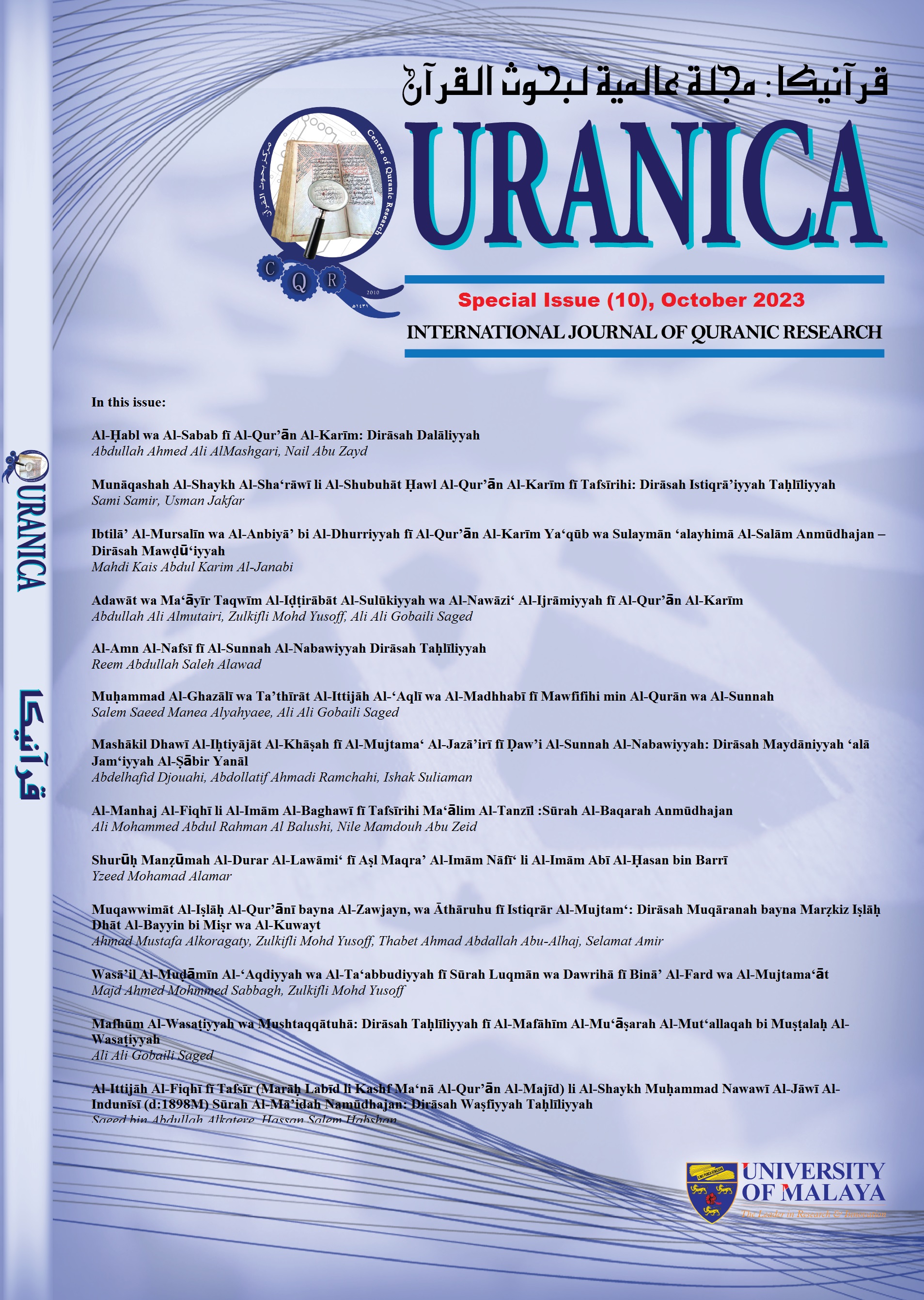Qā‘idah Al-Ḥaml ‘alā Al-Ashhar min Lughah Al-‘Arab fī Al-Alfāẓ wa Al-Tarākīb Al-Qur’āniyyah: Dirāsah Naẓariyyah Taṭbīqiyyah
Main Article Content
Abstract
This research discusses the rule of selecting the most common phrases of Arabic Language in tafsir the Qur’anic phrases and structures. It aims to highlight the efforts of the exegetes to use this rule, to give preference between possible explanatory statements, or criticize or refute the opposing statements. For this purpose, I used the inductive-analytical methodology. Then I divided this research into an introduction, two chapters, and a conclusion. I found the following results. The language of the Qur’an - in terms of Quranic words, style of speech, and familiar meanings - has a clear impact on construing the meaning according to the most common of Arabs' speech and their usual customs and rhetoric. In addition, the rule of the most common phrases of the Arabic language has an effect in directing linguistic interpretation and clarifying the relationship between the wording-based tafsir and the tafsir based on the meaning taken from the As-salaf As-salih’s reported statements. Moreover, the effect of this rule is apparent in controlling and clarifying the meaning, presenting the most likely words, criticizing and refuting the deviating words, keeping away the confusion that may be added to the meaning, and dispelling the illusion of contradiction between the verses of the Qur’an.
Downloads
Article Details
Disclaimer
QURANICA makes every effort to ensure the accuracy of all its contents. However, opinions, discussions, views and recommendations are expressed in this journal do not necessarily reflect the official policy of QURANICA or views of its editors or publishers. Therefore, QURANICA and its publishers will not be liable for any controversy may be arisen. The journal reserves the right, at its sole discretion, to change its terms and conditions of publications.
Copyright
It is a condition of publication that manuscript submitted to the journal have not been published, accepted for publication, nor simultaneously submitted for publication elsewhere. By submitting a manuscript, the author(s) agrees that copyright for the article is transferred to the publisher, if and when the manuscript is accepted for publication.
